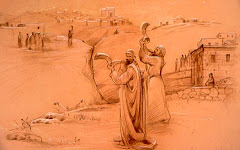

SON UNA TRIBU MILENARIA DE JUDIOS ORTODOXOS EXPERTOS EN ARTES MARCIALES YA DESDE LA EPOCA DEL BEIT HAMIKDASH, MUY INTERESANTE.
http://en.wikipedia.org/wiki/Habbani_Jews
EL ABIR
http://en.wikipedia.org/wiki/Abir_(martial_art)
PAGINA OFICIAL



 While elsewhere in the Jewish Diaspora it was forbidden to own and till land (cf. the Jews of Central Asia), at the end of the 19th and the beginning of the 20th century the Mountain Jews were farmers and gardeners, growing mainly grain. Their oldest occupation was rice-growing, but raising Silkworms and Tobacco was also popular. The Jewish Vineyards were especially famous. The Jews and their Armenian neighbors were the main producers of wine, an activity banned for Muslims by religion. Judaism, in turn, limited meat consumption; and unlike their neighbors, they raised few Domestic Animals.
While elsewhere in the Jewish Diaspora it was forbidden to own and till land (cf. the Jews of Central Asia), at the end of the 19th and the beginning of the 20th century the Mountain Jews were farmers and gardeners, growing mainly grain. Their oldest occupation was rice-growing, but raising Silkworms and Tobacco was also popular. The Jewish Vineyards were especially famous. The Jews and their Armenian neighbors were the main producers of wine, an activity banned for Muslims by religion. Judaism, in turn, limited meat consumption; and unlike their neighbors, they raised few Domestic Animals.










